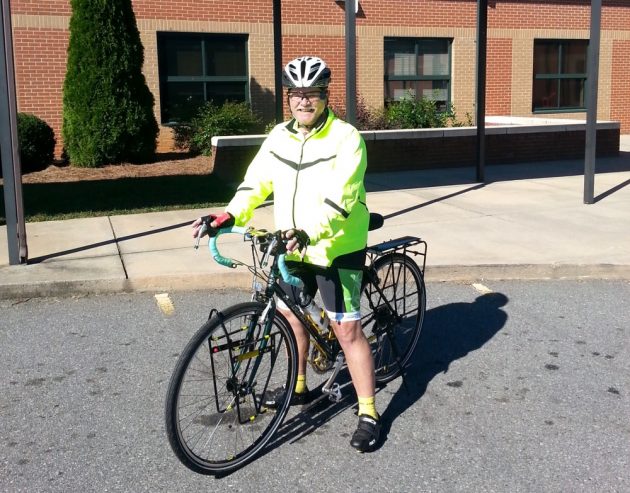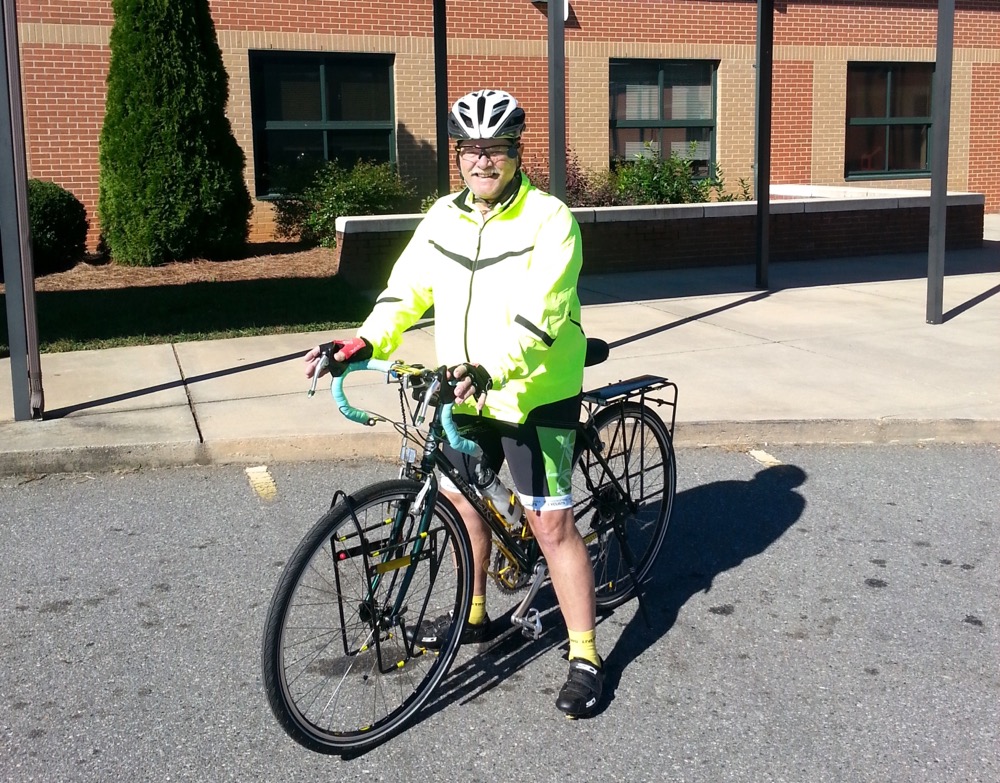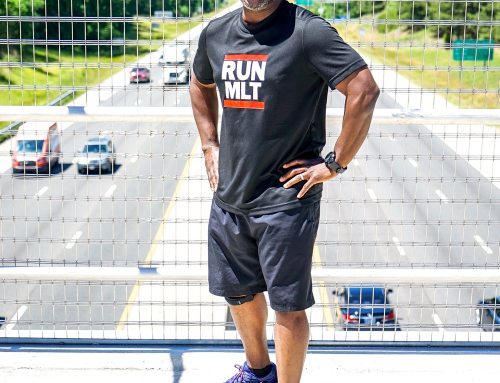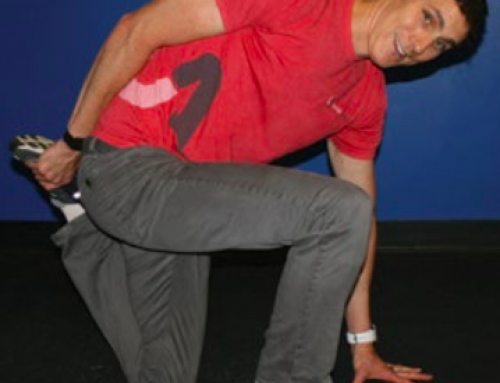A retired firefighter, former assistant scuba instructor, and avid cyclist, James Needham of China Grove, NC, has seen his share of physical activity over the years.
 Bike riding is his true love. But over time, osteoarthritis set in, and Needham had reached a point where his knee pain and stiffness became unbearable.
Bike riding is his true love. But over time, osteoarthritis set in, and Needham had reached a point where his knee pain and stiffness became unbearable.
The 65-year-old first noticed the pain about a decade ago. He had tried steroid injections but they were only a temporary fix. At one point, he was taking eight to 12 Advil a day to help alleviate the excruciating pain.
“My knees have been beaten up pretty doggone good,” he said.
A Plea or Help
A couple of years ago, Needham scheduled an appointment with his primary care provider, Dr. Karl Barkley of Novant Health University Family Physicians in Charlotte. During the visit, Barkley examined his knees and it appeared that the cartilage had deteriorated.
“I’m thinking, ‘I’ll never walk or bike again,’” Needham recalled, his voice breaking.
Barkley referred him to Dr. Bryan Edwards, an orthopedic surgeon at Novant Health Orthopedics & Sports Medicine, Cornelius.
An X-ray confirmed the damage to his knees. Anti-inflammatory drugs, therapy, braces and other treatments didn’t bring Needham relief. He had suffered with knee pain for long enough.
“James is a very outgoing, athletic patient,” Edwards said. “He had developed progressive arthritis in both of his knees to the point that steroid injections, medications, nothing was working. His activity level and quality of life continuously decreased. He got to the point where he was gaining weight and was physically out of shape. We had tried all kinds of different non-operative measures to help him. In James’ case, he basically came to me saying, ‘Hey, I need pain relief and I need to get back to the activity level that I used to have.’”
“He and I had several conversations, and at that point, we decided he was healthy enough and had no medical problems, so we decided to do both knee replacements at the same time,” Edwards said.
A Sense of Relief
Needham had simultaneous bilateral knee surgery in August 2014. The week before his surgery, he ached so badly that he’d have bouts where he would break down in tears.
His knees used to crack when he walked. But now, “I feel like I’m 30 years old,” he said. “There literally is no more pain.”
He’s already recommended knee replacement surgery to his friends and even a few strangers.
He has scars on both knees, each about 8 inches long, but he hardly notices them. “He gave me my legs back,” Needham said of Edwards. “Between God, his hands and Dr. Barkley, they saved my life.”
By November of 2014, Needham was back riding again. Whether it’s hitting the road on his Trek 520 with rear rack or cruising with his favorite green touring bike, his life is back in gear.
“I think a lot of James’ success was James,” Edwards said. “He’s a very ambitious, outgoing guy. Simply, I did the same procedure that I always do. But he attacked the rehab aggressively and did everything we asked. Now, he’s back biking and scuba diving. He is the kind of patient that every surgeon would want to have.”
Following surgery, Edwards said most knee replacement patients could expect a two- to three-day hospital stay and an eight- to 10-week recovery, including rehabilitation through physical therapy. “Most people at a year feel like they’ve recovered from the procedure,” he said.
Needham was back on a stationary bike within two weeks of his surgery. “I was determined.”
A Good Candidate
More people are opting for knee replacements. According to the Centers for Disease Control and Prevention, more than 700,000 knee replacements are performed each year, and the rate of total knee replacement from 2000 through 2010 grew 86 percent for men and 99 percent for women.
The procedure is most frequently performed on adults aged 45 and older, says the CDC. Older patients especially benefit from the pain relief and increased function.
“Commonly, what we hear is the elderly patients can’t play with their grandkids or play pickleball or golf,” Edwards said. “Now, they can get back to those activities. Once they’re able to have the mobility, they’re able to get out of the house and socialize, and enjoy their retirement years. Or, in some cases, people in their 50s and 60s are still working, so they’re able to be functional in their jobs.”
Edwards said he performs 100 knee replacements a year on average, mostly for sports-related injuries.
Double knee replacement surgery is less common, and the orthopedic surgeon cautioned it is not for everyone. A good candidate for total knee replacement surgery would be someone who has documented arthritis of the knee, loss of joint space or collapse of the joint, Edwards said.
“First, I make sure they’ve maximized their non-operative options,” he said. “I would also suggest they do something such as riding a bicycle or aquatic therapy to increase their strength and endurance before the procedure. We’d make sure their primary care provider says they’re medically fit, and then we’d proceed with the knee replacement surgery at the patients’ convenience.”
Edwards said it’s important for orthopedic surgeons to partner with a patient’s primary care provider to make sure the patient’s blood pressure and heart rate are under control. All records are sent to the primary care provider and if there are any issues, he or she can better manage the issues in an outpatient setting because of the communication already established.
# # #
Visit NovantHealth.org/orthopedics to learn more about knee replacement surgery or minimally invasive knee and hip procedures offered by Novant Health.







